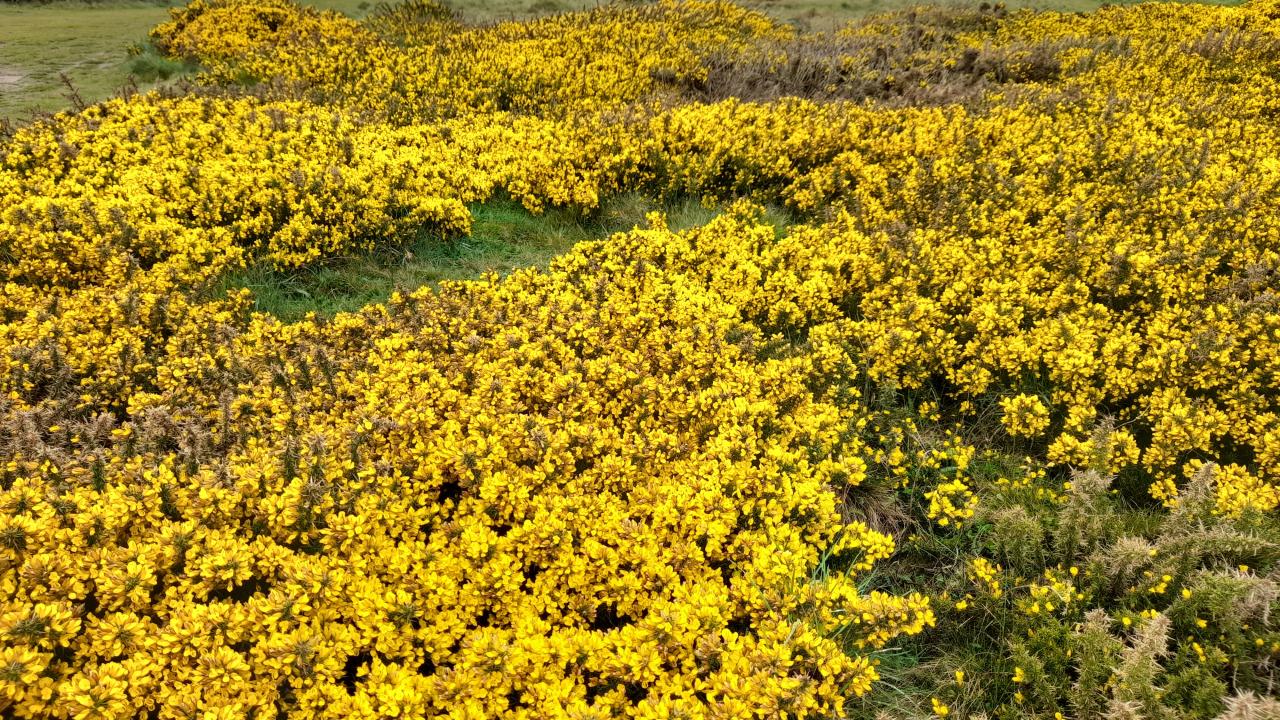Gorse the source of cost impost for farmers

Campbell Town farmer George Gatenby says that he spends up to $20,000 per year in his fight against gorse.
Primary producers have been urged to be vigilant of the invasive weed and have a management plan in place to tackle it, with authorities warning that it can reduce the productivity of agricultural land.
Mr Gatenby said at his property, gorse has historically started on less productive or unused land before spreading to areas of his farm that are vital to his livestock and cropping operations.
“It can be very good for sheltering livestock during lambing and after shearing,” he said.
“But left to get out of control, it quickly infests native forests and any more marginal ground.
“It makes the ground hard to plough and you can’t get to it with normal farm machinery.”
The two main methods Mr Gatenby used to control gorse were burns and chemical sprays.
“We do burning in the initial instance when it's too big, which lowers the height and gets it more controlled,” he said.
“And then we spray by hand before using the tractor and helicopter.”
Mr Gatenby said helicopter spraying was the most significant cost due to the hiring of it and the amount of chemicals that were used.
“We also have to use the mechanical excavators, bulldozers and front loaders – we have used everything.
“The neighbours also use goats because they’re not selective in their grazing, so they’ll eat the gorse as well.”
Gorse management was another ongoing cost for Mr Gatenby and many other farmers.
“As far as its impact on our business, it’s our biggest expense as far as a weed on our property that we try and manage,” he said.
“The danger for us is it taking over the native bush and Crown Land behind us, and then having no methods of control of that ground because it could just spread to its own delight.”
Melanie Fazackerley from the Landscape Recovery Program said gorse is one of the most common weeds in Tasmania.
“This aggressive plant not only reduces pasture quality but also increases fire risk and provides shelter for other invasive species,” Ms Fazackerley said.
“It forms dense, impenetrable thickets that can block access, smother native vegetation and reduce the productivity of agricultural land.”
Ms Fazackerley said the impact of gorse was severe.
“Its high flammability makes it a significant fire hazard, altering how fire moves through the landscape and putting both property and the environment at greater risk.
“Once established, it can dominate an area and replace biodiversity with a single, unproductive monoculture.”
Controlling gorse is challenging and Ms Fazackerley said landowners needed to be persistent.
“Physical removal and herbicide treatment are both effective methods, but they must be followed up for many years, as gorse seeds can remain viable in the soil for up to three decades.
“Prevention is far better than cure, and careful hygiene when using machinery or moving soil is essential to avoid spreading seed to new areas.”
Farmers who have gorse within native vegetation or trees on their property may be required to obtain a Forest Practices Plan before removing the weed.
Forest Practices Authority acting Chief Forest Practices Officer Willem Mulder said primary producers needed to be aware of what they are allowed to do with gorse in certain areas.
“We don’t want to have to see them because they are not complying,” Mr Mulder said.
“We’d rather be consulting with them and engaging with them right up front to get the right outcome for them.”




Add new comment